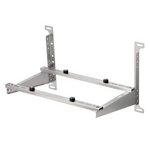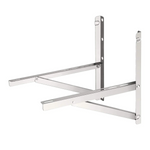What is SACC in Portable Air Conditioner Ratings?
When shopping for portable air conditioners, you may come across two different BTU ratings: SACC and ASHRAE. Both are used to measure the cooling capacity of an air conditioner, but they are based on different testing methods, leading to different results. Understanding these terms will help you make a more informed decision when choosing a portable air conditioner.
What is SACC?
SACC stands for Seasonally Adjusted Cooling Capacity. It is a newer, more accurate rating system developed by the U.S. Department of Energy (DOE) to reflect the real-world performance of portable air conditioners. The SACC rating accounts for a variety of factors that can impact cooling performance, such as:
- Indoor and outdoor temperatures
- Humidity levels
- Heat gained from the exhaust system
- Heat infiltration from windows, walls, and doors
Because SACC takes these variables into account, it provides a more realistic estimate of how well a portable air conditioner will cool a space throughout an entire cooling season.
What is ASHRAE?
ASHRAE stands for American Society of Heating, Refrigerating, and Air-Conditioning Engineers. The ASHRAE BTU rating system has been around for a long time and is based on idealized lab conditions, such as:
- A controlled environment with consistent temperatures
- No accounting for outdoor heat or humidity
- Minimal heat infiltration from outside the room
While the ASHRAE rating gives a basic idea of the unit's cooling power, it doesn't consider the environmental challenges that can affect a portable air conditioner's real-life performance.
Differences Between SACC BTUs and ASHRAE BTUs
The key difference between SACC and ASHRAE BTUs is how they measure cooling capacity.
- Realistic Testing (SACC) vs. Idealized Testing (ASHRAE)
- SACC ratings use more comprehensive testing conditions, considering outdoor temperatures, humidity, and the inefficiencies of portable AC units due to their exhaust system and heat gain.
- ASHRAE ratings are calculated under ideal, lab-controlled conditions, which don’t reflect the real-world performance of the unit.
- Lower SACC BTU Ratings
- Portable air conditioners will often have a lower SACC BTU rating compared to their ASHRAE rating. For example, a unit with an ASHRAE rating of 12,000 BTUs might have a SACC rating of 7,000 BTUs. This is because the SACC method accounts for the environmental factors that reduce the unit’s actual cooling ability.
- Energy Efficiency
- SACC ratings give consumers a more accurate measure of energy efficiency since they reflect the unit's performance in a variety of conditions. A lower SACC rating often indicates that the unit will consume more energy to achieve the desired cooling effect than its ASHRAE rating suggests.
- Buying Decision
- The SACC rating is more relevant for consumers because it represents how the portable air conditioner will perform in your home, where conditions are rarely ideal. ASHRAE BTUs can be misleading, so it's better to focus on the SACC rating to gauge how effective the unit will be during the cooling season.
Why the Change?
The SACC rating system was introduced to improve transparency and help consumers compare products more accurately. Since portable air conditioners often need to vent hot air outside, this process reduces their overall efficiency. The DOE recognized this gap in the ASHRAE rating system, leading to the development of SACC as a more accurate measure of cooling performance.
Which Rating Does TOSOT Use?
At TOSOT, we offer a wide variety of portable and other types of air conditioners. Each product is named using the ASHRAE rating, but both the ASHRAE and SACC ratings are listed on the individual product pages.
Although SACC is the more realistic rating method, we’ve found that people are more familiar with ASHRAE ratings. Also, other companies tend to use the ASHRAE ratings to make their units seem more powerful if they even mention the more realistic SACC rating at all.
For this reason, we list the ASHRAE rating in our product names, but we also list the SACC rating and write informative blogs like this so you can make a more informed decision when it comes to purchasing your portable air conditioner.
If you ever have questions about these ratings, feel free to reach out to our customer support team so we can help you out!
Conclusion
When evaluating a portable air conditioner, always look for the SACC BTU rating, as it provides a more realistic understanding of the unit’s cooling capacity. While ASHRAE BTUs might appear higher, they don't reflect real-world performance, making SACC the better measure for choosing the right portable AC for your space. Understanding the difference will help you find a unit that can meet your cooling needs more efficiently and effectively.





